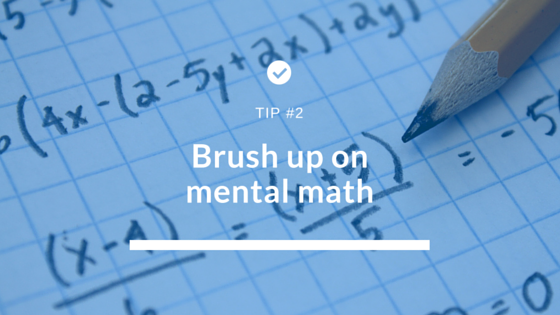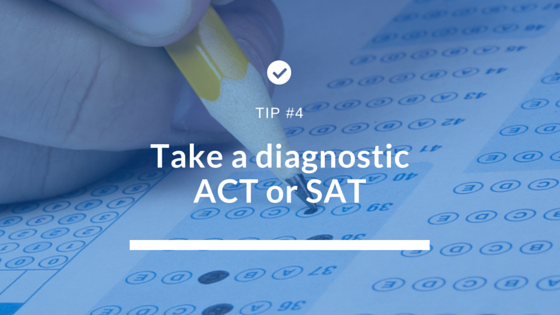For many students, junior year is a significant turning point in their high school career. Seemingly out of nowhere, the demands and expectations have increased—high volumes of homework in AP classes, learning new (and oftentimes more complicated) topics at a quicker pace, not to mention it’s suddenly time to start thinking seriously about college.
Amidst all of these stressors, it’s easy to look at winter break as an opportunity to do nothing but become a certified couch potato; however, it’s actually one of the most important times of the year for students to get ahead of the game. Taking advantage of two weeks off from school could be the factor that sets one group of students apart from another when application season rolls around.
We want to provide juniors with the following tips to make the most out of this winter break. That way you can be as prepared as possible for second semester and beyond.
Why? There aren’t really any downsides to reading more. Considering the importance of reading comprehension in virtually every academic subject, in addition to a section on both the ACT and SAT devoted entirely to testing a student’s reading comprehension ability, it’s imperative that students begin familiarizing themselves with text other than those assigned in class.
The redesigned SAT Reading section now contains a Global Conversation Passage which requires students to read a long historical passage and then answer questions about the text. For students who are not used to prose from the 1700s and/or 1800s, this section of the exam might be extremely difficult, especially given the time constraint. Furthermore, both the SAT and ACT Reading sections include passages that cover topics such as scientific discussion and the humanities.
Each of the types of passages above might throw off students who are seeing them for the first time on the exam. But you can avoid the shock by starting your preparation right now! We suggest spending 2 or more hours per week reading articles from well-established publications such as the New York Times or literary magazines like The Atlantic. You can even try exploring new texts in your local library or downloading a free eBook on a unique topic.
Why? Students will now need to prepare for the No Calculator section on the redesigned SAT. This section consists of 20 questions that will need to be completed in 25 minutes—that’s not a lot of time per question! But you can tackle this section if you start practicing writing out problems instead of relying on a calculator.
We came up with three steps students can take to prepare for this new Math section on the SAT:
- Write it out. Immediately write down everything you know about the problem. It isn’t worth it to keep it all in your head—you’re using your head enough! This advice is especially true for word problems. Here, the writers will present you with a lot of information at once. Read the problem sentence by sentence and write down what you know as you go.
- Master the basics. That means practice, practice, practice. You may be surprised by how much you’ve been relying on your calculator in everyday classes. Try practicing simple math problems in or out of school without a calculator. The more you practice, the faster and more accurate you’ll become.
- Work backwards. Problems on the redesigned SAT will try to trick you into doing a lot of complicated math. However, this is rarely (if ever) the most efficient way to solve a No Calculator SAT problem. Instead, try testing the answer choices directly.
Here's an example of working backwards:

Start by replacing x with 8 in the problem. Move it to the other side of the equation and notice ![]() must equal 8. That means
must equal 8. That means ![]() must equal 64. Simply replace k with each answer choice until you find 64. The correct answer to this problem is (B).
must equal 64. Simply replace k with each answer choice until you find 64. The correct answer to this problem is (B).
In addition, there are countless apps and online resources that test mental math, as well as help you brush up on other subjects (some even help you prepare for the SAT and ACT!). Here are a few:

Why? Strong writers have an arsenal of vocabulary built up from continual reading and practice. Both the SAT and the ACT include Writing and Essay sections, and a significant part of students’ scores on each test depends on language and convention use. This is where you can distinguish yourself if you have developed a robust vocabulary and understand where it is best utilized in a specific context.
Developing a strong vocabulary is also extremely helpful when it comes to writing college essays, and, even more importantly, writing essays in college! Winter break is a good time to start building up your own arsenal. We recommend trying out Membean to test your vocabulary skills, or branching out and reading a challenging text. Write down the words you don’t recognize and make flashcards to test yourself. And as always, keep practicing!
Why? There is no better nor more accurate way to gauge where you are starting. Furthermore, winter break comes at a perfect time for juniors to begin seriously thinking about prepping for the ACT or SAT. Taking a diagnostic exam during break puts you in a good position for the coming academic year. It allows you to utilize spring of your junior year to effectively prep for the official exam, and even if you don’t get the score you want, you’ll have first semester of senior year to try again.
If you aren't sure when you should start preparing for college admissions tests, check out the ideal ACT test preparation timeline and SAT test preparation timeline.
Need more convincing? Read on to find out why taking a diagnostic ACT or SAT is extremely beneficial.
- Identify weaknesses in test-taking strategies. These can be content-related issues or testing issues (such as test anxiety or test fatigue). It’s important to recognize and address them before preparing for the official exam.
- Find out which universities are attainable. While standardized test scores are certainly not the deciding factor in college admissions, they do play a significant role in the application process. Taking a diagnostic ACT or SAT is an ideal first step in determining which colleges and/or universities are in reach for students, based off of test scores from the current students at each school.
- Decide which test fits your strengths best. With big changes coming to the SAT next spring, students may want to consider turning to the ACT. But how will you know if the ACT plays to your strong suits? Certain students may perform better on the redesigned SAT than the ACT and vice versa—the surest way to find out is to take a practice exam.
- No cost, full of advantages. ArborBridge offers free diagnostic exams for students, as well as a free customized score report that analyzes each question on the exam by correct answer vs. student answer, question difficulty, and question type. We’ll even provide you with a list of recommended lessons scientifically selected to accommodate to your needs based on your diagnostic.










